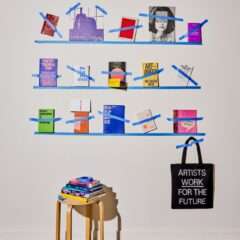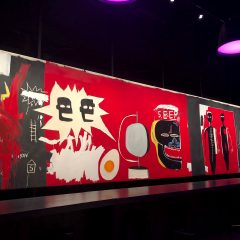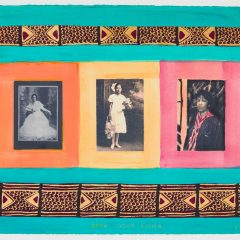I was warned that the conversation might be one-sided but I was eager to go to Andy Warhol‘s grave and chat with him anyway. Madelyn Roehrig, my dear friend, took me there as part of her project to chronicle Andy’s grave and people’s relationships to it and to him. Madelyn’s been to the grave many times herself (she lives nearby) and since the project began in February she’s been there daily where she not only talks with Andy — but gets feedback from him!
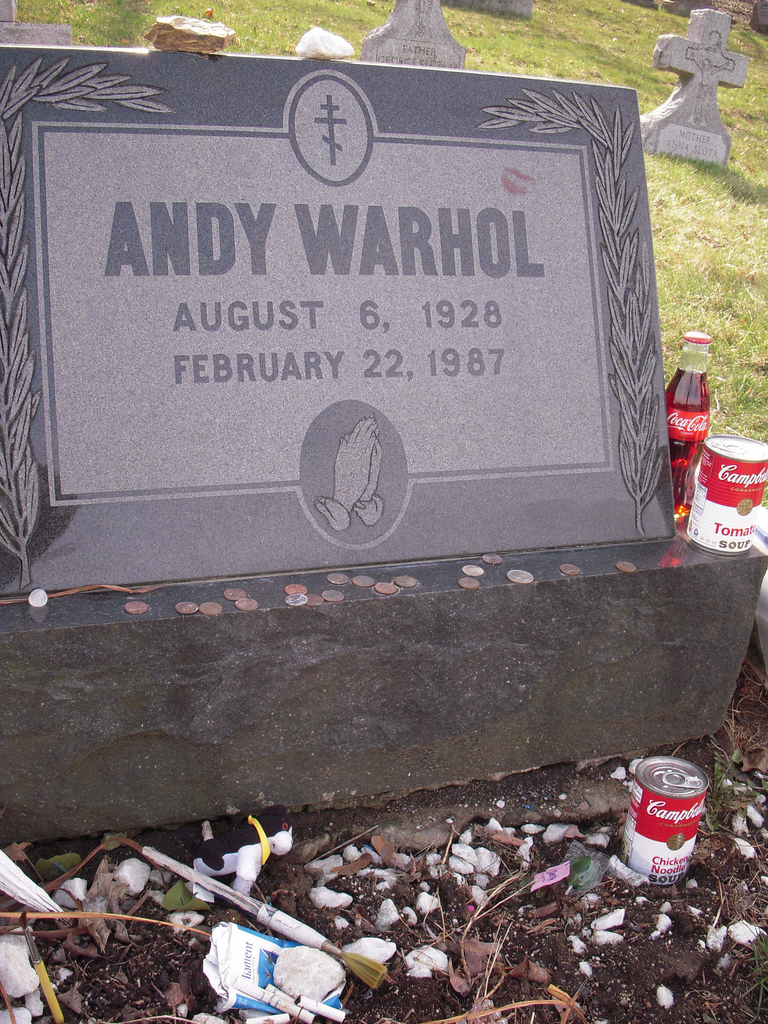
Andy in life had a dry sense of humor and spoke in Delphic monosyllables. Apparently he’s like that in the great beyond as well. Madelyn, in her talks with Andy, has been getting cryptic hints from from him about her project. For example, he told her to go see Susan Sontag‘s screen tests (Andy did a bunch of screen tests, moody high contrast silent shorts of people he worked with, met or was interested in for some reason — there’s a quick montage on YouTube but be forewarned they’re set to music. You must turn the music off to get the real feel for the work, in which silence is a big part). Jonathan Jones of the Guardian says the Screen Tests are Andy’s best works on film and that they live up to his best paintings.
So anyway before we hit the graveyard we went to the Warhol Museum to watch Susan in her 7 screen tests.
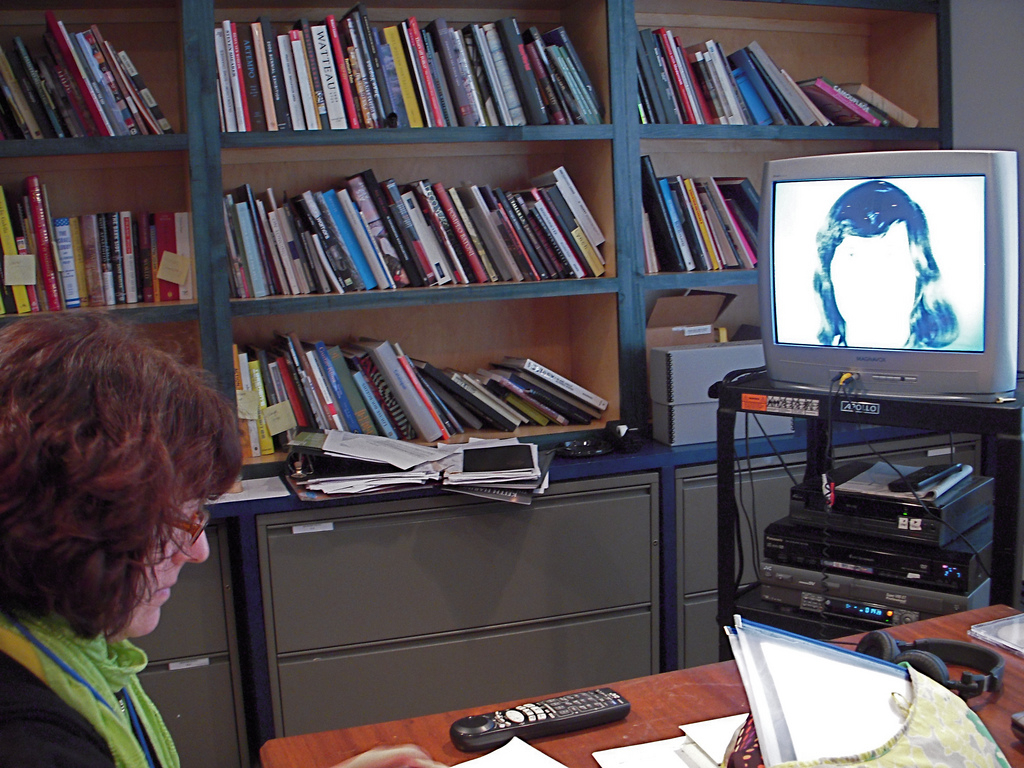
All the way through, Madelyn wondered out loud what it was she was supposed to be getting from the experience. Something technical? What did Andy mean by steering her here? The short silent films were shot as film (starting in 1964) and are converted to video, and they have wonderful white-out entrances and exits so each person apparates and disappears in the snow/smoke–it’s ghostly and lovely. That technique would be a great one to adapt. Maybe that’s what he meant. Or maybe he was sending Madelyn on a wild goose chase.
Regardless of the why of it, it was great to see all that Susan Sontag. Sontag is a commanding screen presence who tried on various roles from film to film. She’s a stern, unblinking statue in one; a coquette flirting with the camera in another; a mysterious Jackie O look-alike when she has her dark glasses on. What was interesting to me is the range of the roles she played …and that nowhere would you have gotten “one of the greatest writers and thinkers about art and photography” out of any of them. It was as if she had dropped that role entirely to play act. She could have had a film career–she was compelling.
While at the museum, we saw Eric Shiner, the Warhol’s new curator, who had agreed to be part of Madelyn’s project. Madelyn wanted to videotape him. (She will videotape others, too, for the project, like a conservator who takes care of his paintings, e.g., removing lipstick kisses; and an elderly woman who actually knew Andy and Victor Bockris who wrote a bio about Andy.). Shiner’s task was to say something to Andy, anything he wanted, any way he wanted. It was a cryptic command and Shiner took a moment to orient himself. Then, in the spirit of Warhol, the curator asked Madelyn to turn the camera on his friend, the artist Conrad Ventur, who was with us in the conference room. Shiner would speak while the camera would show Conrad. I can’t wait to see this. At one point Shiner started reading from the Andy Warhol diaries, which is supposedly in Andy’s voice (it’s ghost-written but it’s probably close to his voice). To have the curator mouthing Andy’s words and Madelyn capturing it on video might have been why Andy sent us to the Warhol Museum in the first place. It seemed a great confluence of Andy-ness all at once. Andy speaking from beyond the grave.
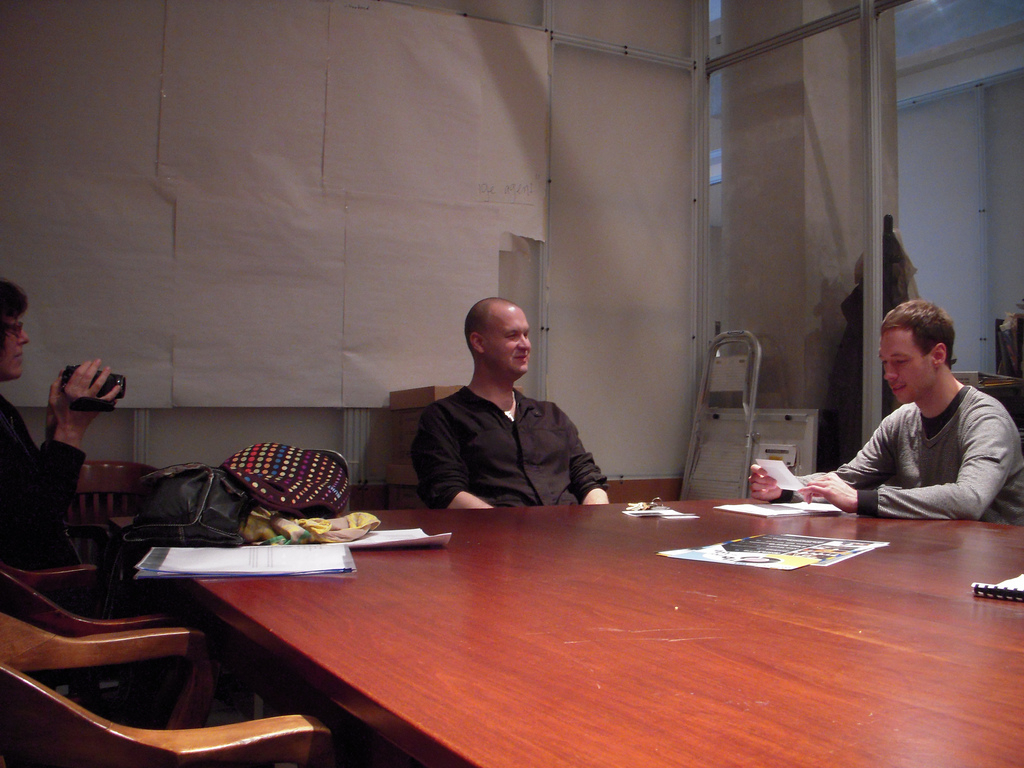
Shiner gave Andy a peppy update on what was going on at the museum including new programming that will involve some of Andy’s Factory friends. (They’ve already had Brigid Berlin in and Shiner says he’s eager to work with more of the Factory folk–get them to Pittsburgh and all that). I’m a chronic note taker so I took notes.
Shiner is back in Pittsburgh after a 14-year absence, he said. He was an intern at the museum when it first opened. He said that in the fall they’ll be hosting the Shephard Fairey show that’s now at the Boston ICA, and he was sure Andy would like Fairey’s use of pop culture imagery and screenprinting. In the Spring, they’ll have a fashion-related show with Halston and Pucci (including the Devon Dikiou piece that was at Moore College recently). Devon is a friend of Shiner’s and Shiner, in fact, came to Philly for the opening of the Moore show.
I think he said they would have a Warhol/Duchamp show…and also something called Factory Direct, with 10-12 artists brought to Pittsburgh to make something with a local Pittsburgh factory. They will have a Playboy show. (Andy did some work with Playboy bunny imagery). And soon they will have Andy’s Double Marilyn on view–it’s on loan from the family and Shiner says he’s really happy to have it.
Grave side
We drove from the Warhol Museum to the cemetery — St. John the Baptist Byzantine Catholic Cemetery — in Bethel Park and it seemed to be miles and miles over bridges and through tunnels, up and down and in dizzying switchbacks that strengthened my resolution to never, ever attempt to drive in Pittsburgh. But we got there and the place is wonderfully unassuming as cemeteries go. There’s a gravel entry road that spins off a residential street and no sign announcing the name of the place. A lone white statue of the BVM tells you that you’re in a Catholic zone.
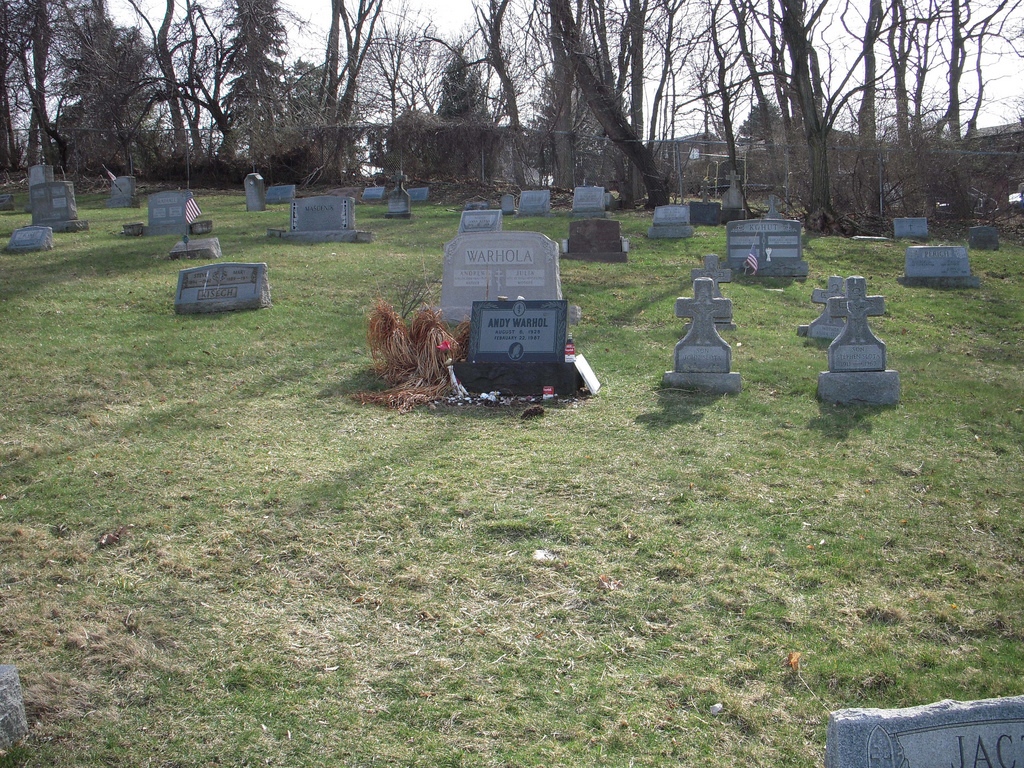
My experience of cemeteries is limited and this one surprised me because every gravestone faces east–to the rising sun. It makes for an orderly formation that is almost militarist (or minimalist in the art sense). I studied the tombstone and Madelyn talked about people she’s met there who live nearby and take walks on the gravel road. Earlier that day she’d met someone who had a camera and was also doing a project documenting the grave.
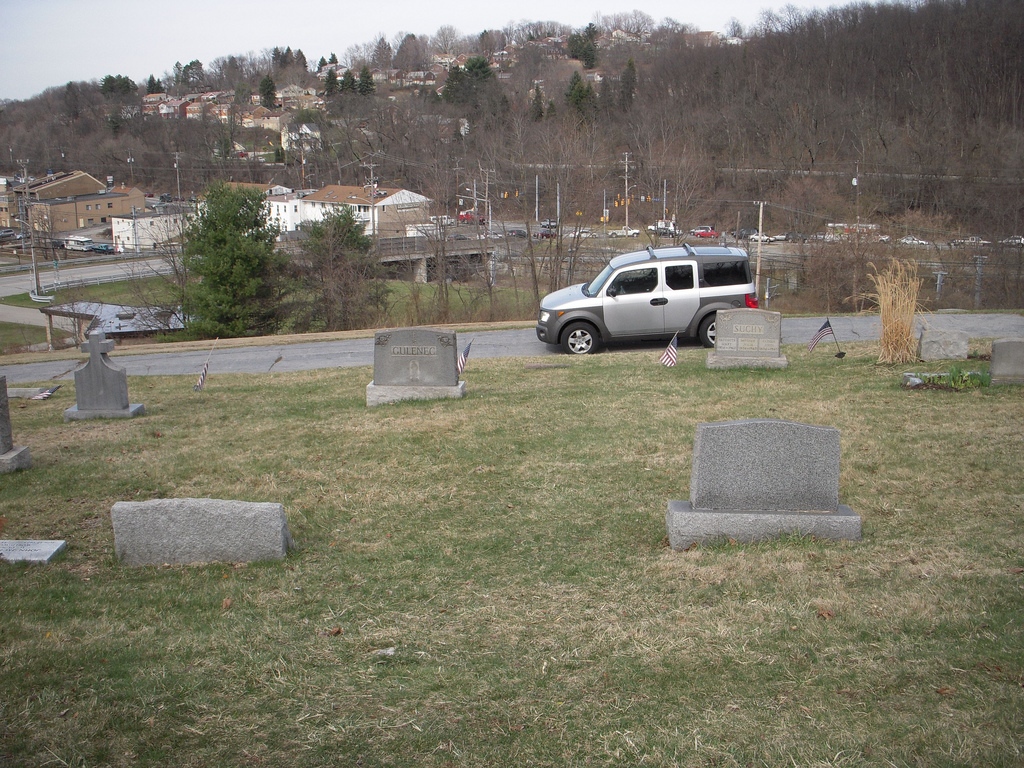
I found it touching how ordinary it all was. Nothing rah rah about anything. People had left gifts (stones on the marker; Campbell’s soup cans, cigarette butts, a full glass bottle of Coke, spare change; a paint brush; sweet ‘n’ low). Madelyn’s project folder is there chock full of paper and colored markers for writing to Andy. There’s a letter from her explaining the project and inviting you to write something…or to call the Andy hotline she set up to leave a message for him (412 508 9245). There are a surprising number of mash notes in the notebook and some sweet letters to Andy, most of them signed with hearts and first names. Someone wrote that he’d taken some of the spare change — that was my favorite message. I wrote him a note and left him some Gas-EX since I know he had stomach trouble after being shot by Valerie Solanis. I thought he might appreciate the pills and I had not come prepared with any other kind of offering. I told him that every year his star blazed brighter in the heavens and that his Warhol Foundation is leading the way in funding experimental art and scholarship and is so much better than the NEA.
This Saturday, April 4, from 3:00 PM to dusk, Madelyn will be at the grave with her video camera to record whatever happens. She’s handed out postcards about the event around town and is hoping for a turnout. Here’s how to get there if you’re interested.
Madelyn’s project is part of her MFA thesis work at Vermont College where she graduates this July. Once she has the project’s website up and running she will have videos and photos on Facebook and YouTube. So, get in touch by all means if you have something to say to Andy or want to participate in Madelyn’s project. Call the hotline or go to the grave. Once the web stuff is up, I’ll put the links in and you can reach Andy and Madelyn through Facebook. They’d both like to hear from you.


